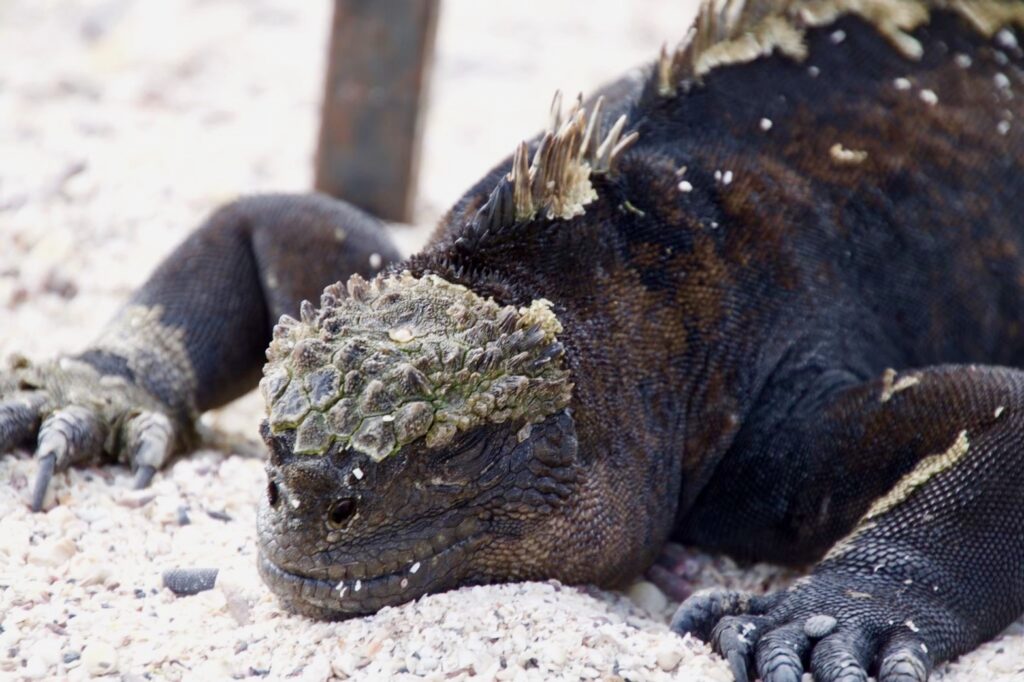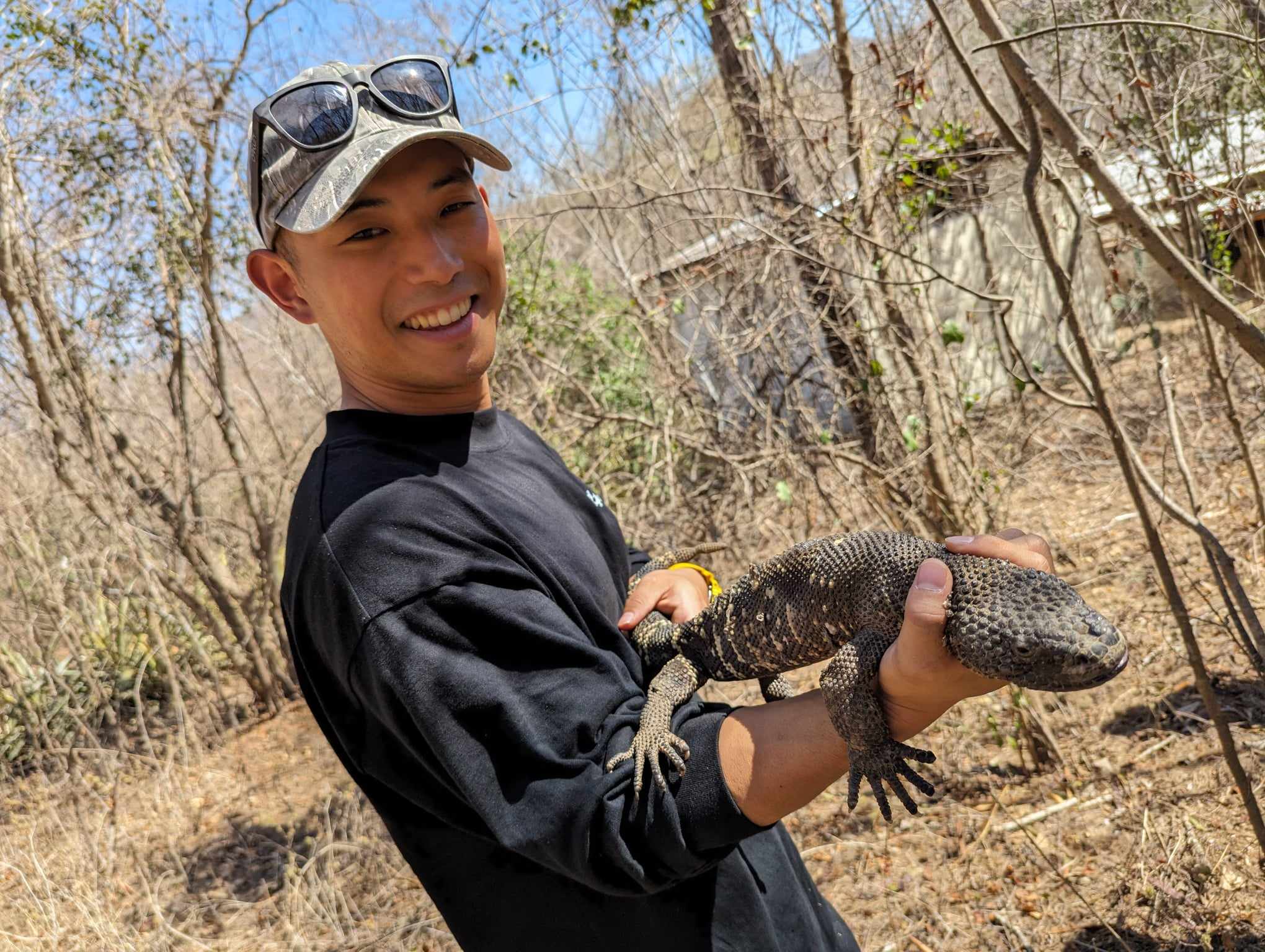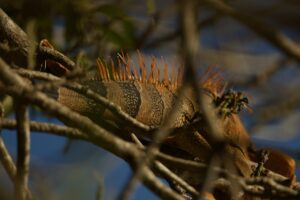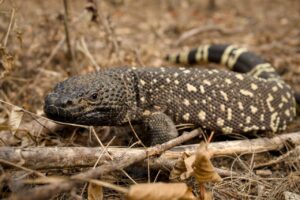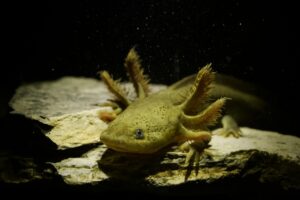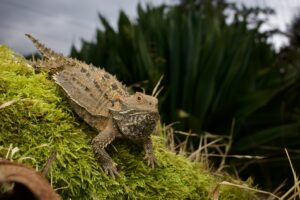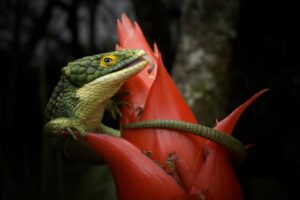The Galápagos marine iguana (Amblyrhynchus cristatus) is a remarkable species and the only lizard in the world that forages in the sea. Endemic to the Galápagos Islands, this reptile has evolved to thrive in both marine and terrestrial environments, making it a true icon of the archipelago.
Appearance and Subspecies Characteristics
There are 11 recognized subspecies of the marine iguana, with each subspecies showing slight differences depending on the island they inhabit. Notably, individuals from Isabela and Fernandina Islands tend to be the largest. For most of the year, marine iguanas are black, a color that helps them absorb heat after their cold forays into the sea. However, during the mating season, males dramatically change color. This color variation differs among the subspecies: Española and Floreana Island iguanas turn bright green and red, Santa Cruz Island iguanas display red and black, and those on Fernandina Island take on a dull green and brick-red hue. Juvenile iguanas, on the other hand, are mostly black with a lighter dorsal stripe.
Behavior and Amazing Adaptations
While the Galápagos marine iguana may seem slow and awkward on land, it is an excellent swimmer. Their powerful claws allow them to cling to rocks, even in strong ocean currents, where they feed on algae. Larger individuals venture farther offshore, while smaller ones stay near the coast, feeding on algae exposed at low tide.
One of the most fascinating behaviors of the marine iguana is how they manage the excess salt in their diet. Since they consume large amounts of salty seaweed, they need to expel the extra salt from their bodies. They achieve this through specialized nasal glands that filter the salt from their blood. This excess salt is then sneezed out through their noses, often forming salt crystals on their snouts, giving the appearance of wearing a “salt crown.” This unique adaptation is essential for maintaining their internal balance.
Social Behavior and Thermoregulation
Though not considered highly social creatures, marine iguanas are known to be gregarious, especially on cold nights when they huddle together for warmth. During the day, they bask in the sun, using their dark scales to absorb heat. Once they are sufficiently warmed, they dive into the ocean to forage. Their heart rate slows to conserve energy while feeding underwater, allowing them to spend more time searching for food in the cold waters.
Threats to the Population
The Galápagos marine iguana is protected under Ecuadorian law and is listed in CITES Appendix II. However, they still face significant threats. Introduced species such as cats and dogs, brought by humans, have drastically affected iguana populations by preying on juveniles. Additionally, El Niño events have been known to reduce their population by as much as 85%, as it causes shortages in their primary food source—algae. Marine plastic pollution, particularly microplastics, also poses a growing threat to their survival.
Conclusion
The Galápagos marine iguana, a species found nowhere else on Earth, stands as a testament to the incredible adaptations of nature. Their unique behaviors, including their salt-regulation system and their ability to thrive in both marine and land environments, make them a fascinating creature to observe. One day, I hope to return to Ecuador and dive alongside these remarkable reptiles, experiencing firsthand the marvels of their underwater world. Learning about their ecology and the threats they face reminds us of the importance of conservation efforts to protect these extraordinary animals.
